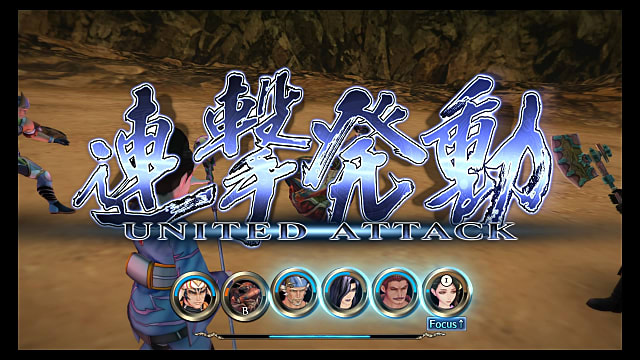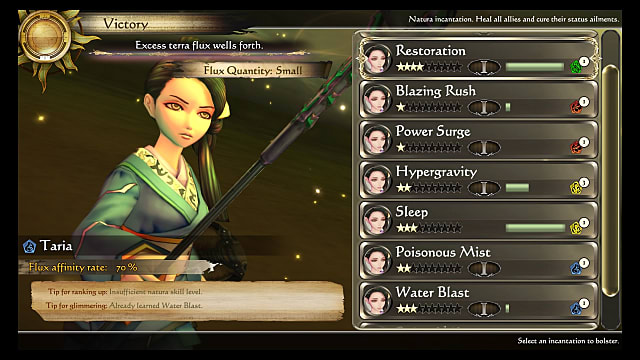You don’t have to master every mechanic in SaGa: Scarlet Grace to finish a playthrough, but you do need to grasp some of the game’s less-than-explained mechanics to have a fulfilling time.
As with any of the SaGa titles since the SaGa Frontier series, Scarlet Grace explains just enough to get by. It doesn’t go out of its way, though. For many, part of the fun of SaGa is figuring it out on their own.
However, I played Romancing SaGa: Minstrel Song, which explains as much as it possibly can but is still one of the most obtuse RPGs I’ve ever played. I don’t trust these games to really help me out. You probably shouldn’t, either.
How to Recover LP
LP stands for Life Points in the SaGa series. In most entries, when a character’s LP reaches 0, they’re either dead for good or get booted out of your party until you can recruit them again. This is not the case in Scarlet Grace.
When a character reaches 0 LP in Scarlet Grace, they are benched for 7 engagements — i.e. battles. After that period they are returned to your retinue to use again, at full LP.
It is possible to recover LP before they get knocked out. To do so, you simply swap them out of the active portion of your retinue and let someone take their place. The removed character will recover 1 LP every two engagements. (It seems some characters may take three engagements per LP, but I can neither confirm nor deny that yet.)
Using a Bow or Axe? You Need DEX
This is something that’s been in the series all these years but some fans still don’t get it: a character needs high DEX to reliably hit with a bow or an axe.
I do not recommend equipping an axe or bow to any character with less than 10 DEX. The more DEX a character has, the better off they will be. Ten or above is a must, and even 10 DEX is pushing it a bit. I prefer 11 or above.
You Don’t Have to Examine Everything, but You Should
I watched someone streaming SaGa: Scarlet Grace over the weekend and noticed their playstyle was actually totally different than mine. They just ran from one story target to the next without checking anything else out.
I’m not going to say this is the wrong way to play the game, but it’s definitely not in the spirit of SaGa to just rush through the story. Why? Because the story sucks.
The whole appeal of the series is to have the freedom to do what you want within the confines of the game’s systems. There’s a lot of stuff going on in each region that you should check. These allow you to meet new characters to add to your retinue, unlock optional scenarios with impressive rewards, or just make sure you have enough materials to forge equipment.
Your actions affect more than you think. You can just push through the story, but why would anyone play a SaGa game to do that? This isn’t Final Fantasy. Go get your battle on and accidentally make a volcano erupt by just exploring too much of the region. That’s a lot more fun.
The Game Saves Constantly
I’m usually the type who saves all the time, but this is one of the very few games in which I haven’t because Scarlet Grace saves before every single interaction — outside of between engagement waves.
I’d say it’s a good idea to manually save before doing something that may heavily impact your game, but in general, just let the game do it for you. Otherwise, you’ll be spending 1/6 of the game in the save screen — and that’s no fun.
What Are Weapon Types?
This shortsword’s curved, this one’s technical, and this one’s standard. What the heck does that mean?
Actually, this is one of the few simple answers: A weapon’s type gives an indicator for the types of techniques it can learn.
You can check which techniques a weapon can learn before you forge or equip it, which gives you a much clearer understanding of what a weapon can do.
What’s notable here is techs a character learns with one weapon can be used with other similar weapons. So if one character is using a spear and learns Aim, Aim will be usable with any other spear regardless of its type.
Forge, Forge, and Forge Some More
This should go without saying, but I want to emphasize how important it is to keep your equipment up to snuff.
Since your retinue does not gain regular stats through the course of the game, their equipment quality is paramount to survival. Events can’t be relied upon for equipment, so make good use of forging your equipment.
Formations and You
A series staple, formations are back and more potent than ever in SaGa: Scarlet Grace.
The formation you’ve chosen for your retinue affects their starting BP, BP regeneration method, stat adjustments or other boons on retinue members in certain positions, and can even open up benisons. If you’ve got a party you really want to use but can’t seem to make it work, change up the formation and try from a different angle.
What are Benisons?
Benisons are one thing the game doesn’t really explain. You get them via some events but mostly from using certain formations.
You must use a formation to get its benisons, which can heal or deal damage based on whatever their trigger condition might be.
Some benisons trigger from party or enemy united attacks, some from critical hits on either side. There’s a whole host of conditionals benisons can be tied to. They are a massive part of the game and something to seriously take into consideration when choosing your formation.
How to Learn Magic
The SaGa series at large has never had a ton of mage-type characters, unless you’re playing Romancing SaGa: Minstrel Song and have the patience to build classes through multiple playthroughs and are totally cool with using the same spell on a boss over and over.
There aren’t a lot of mages in Scarlet Grace by the typical definition. If you have a character with high INT in your retinue and want to use it as a mage, you’ll have to put special effort towards that character.
I started with Taria with mages’ rarity in mind, and I didn’t regret it. It also taught me a lot about the game’s magic system, which could be a whole article on its own. I’ll digress and try to keep it simple, though.
Step 1. Have a Staff Equipped
The spell(s) a character starts with are based off of the character themselves, as you’ll notice all staves claim the same technique.
It is imperative you keep a staff’s facets in mind when equipping it, because it affects the rest of this process.
Step 2. Use Magic in Battle
Take that newly-equipped character into battle and use those new magic spells. Using a spell of a particular element will give that character a level increase in the element’s invocations.
Increasing element invocation levels are key to learning further magic, because the true flow chart of magic learning is as follows:
Increase element’s invocation level Rank up spells using Fluxes at the end of battles Hopefully, eventually glimmer your current spells via Fluxes (Glimmering is learning a new spell) Rinse and repeat on the new spell
Step 3. Use Fluxes to Great Effect
With the above flow in mind, you’ll need to make good use of your Fluxes.
Fluxes are granted at the end of battles only when you have someone with a staff equipped in your party. You can choose which spell you want to put the Flux toward.
Each spell you can choose will note whether it can be ranked up or glimmered. You must keep increasing that element’s invocation level to continue to rank its spells, and you can start trying to glimmer a spell once you’ve reached the appropriate invocation level.
If you have a staff of a certain element equipped, it will attempt to glimmer spells of any element into a spell of that element. Worth keeping in mind and working around.
She’s using an umbra staff, so even Restoration is trying to glimmer into Water Blast.
There is so much to say about SaGa: Scarlet Grace that an article triple this size couldn’t effectively cover all the things to know to succeed in one’s journey. It is a brutal and complex game, but is luckily very forgiving if you’re willing to learn.
Let us know in the comments any other tips you may have or tell us how you’re enjoying SaGa: Scarlet Grace! I’m going nuts for it, but is it better than Minstrel Song? I’m still on the fence, but… probably.



